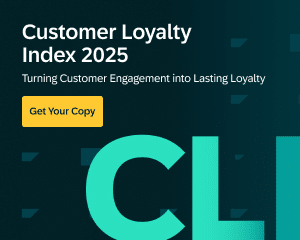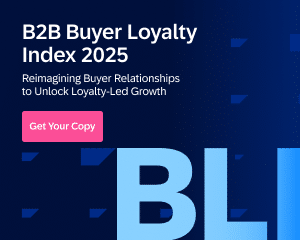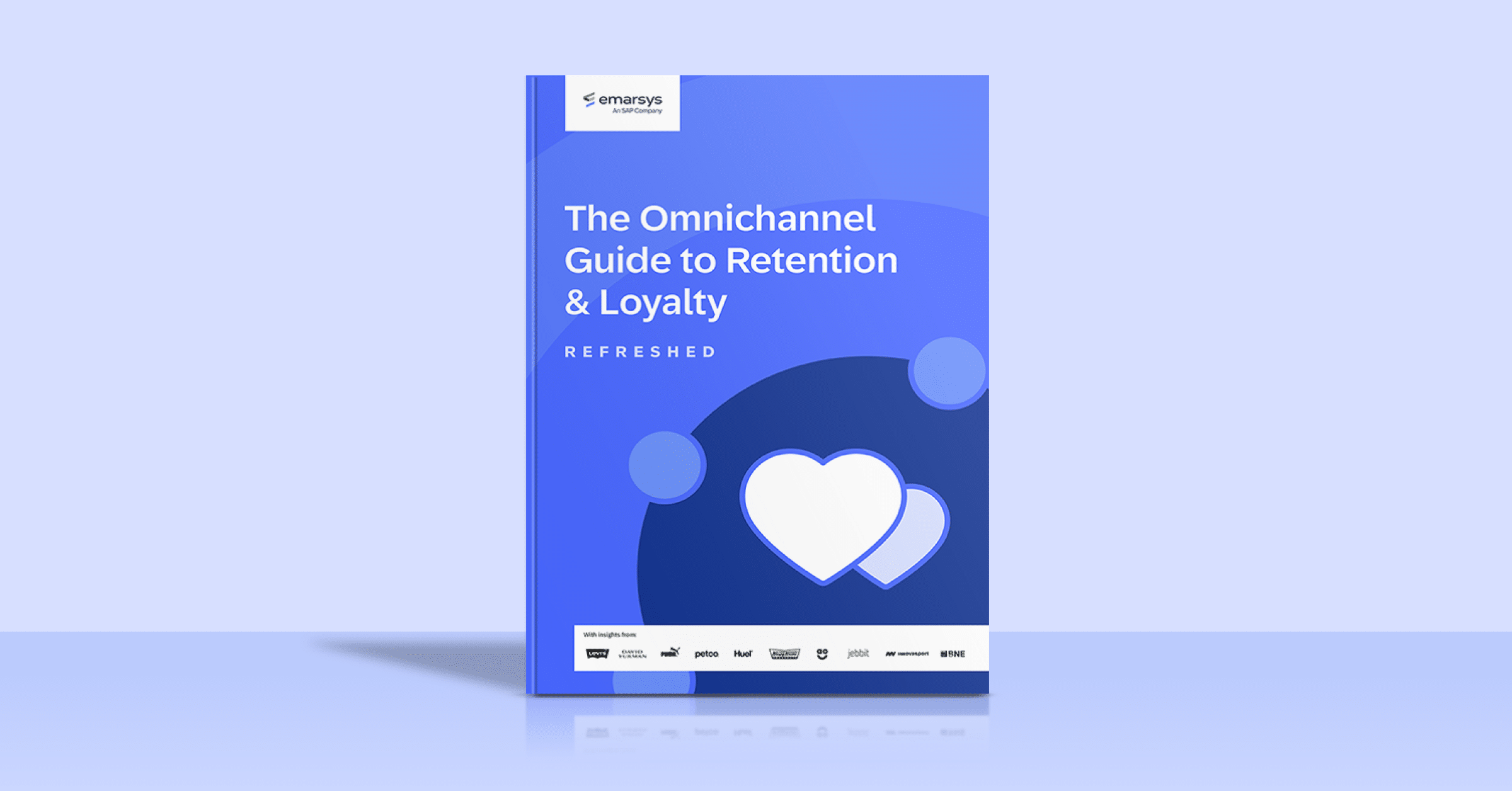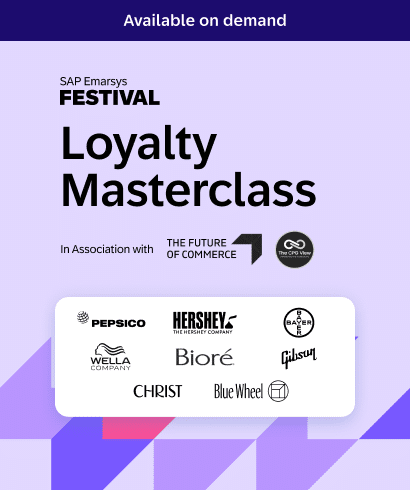In an age of endless privacy updates, crowded inboxes and limitless distractions, getting someone to open your email is already hard enough. However, getting them to click, and then convert? For many brands scaling DTC, that’s a whole other challenge.
But here’s the good news: Email is still one of the most powerful ways to dive measurable, one-to-one customer engagement at scale – when done right.
At SAP Emarsys, we’ve seen first-hand how brands are moving beyond vanity metrics and building smarter, more personalized programs that drive real results, from conversion rates to long-lasting loyalty. And in this article, we’re breaking down 10 time-tested strategies for improving email engagement, all backed by real-world examples from brands like PUMA, John Frieda and Krispy Kreme. Let’s dive in.
1. Segment Audiences Based on Lifecycle and Behavior
Not all customers are the same. Your emails shouldn’t treat them like they are. Segmentation is one of the most effective ways to improve email engagement because it ensures your message is relevant to the person receiving it. Whether you’re targeting loyal customers, first-time buyers, or lapsed users, tailoring your campaigns to specific lifecycle stages and behaviors can lead to significantly higher open and click rates.
The most powerful segmentation strategies, however, take things a step beyond simple demographics. The ones that really impact business outcomes are driven by a blend of historical data and real-time behaviors, like past purchases, email engagement and on-site or in-app activity.
Example in action: Krispy Kreme used Emarsys to unify in-store, online, and loyalty data into automated email programs, including branded welcome flows and lifecycle journeys. This smarter segmentation helped fuel a 53 % increase in leads, boost website clicks by 70 %, and drive a 19 % uplift in digital revenue year over year.
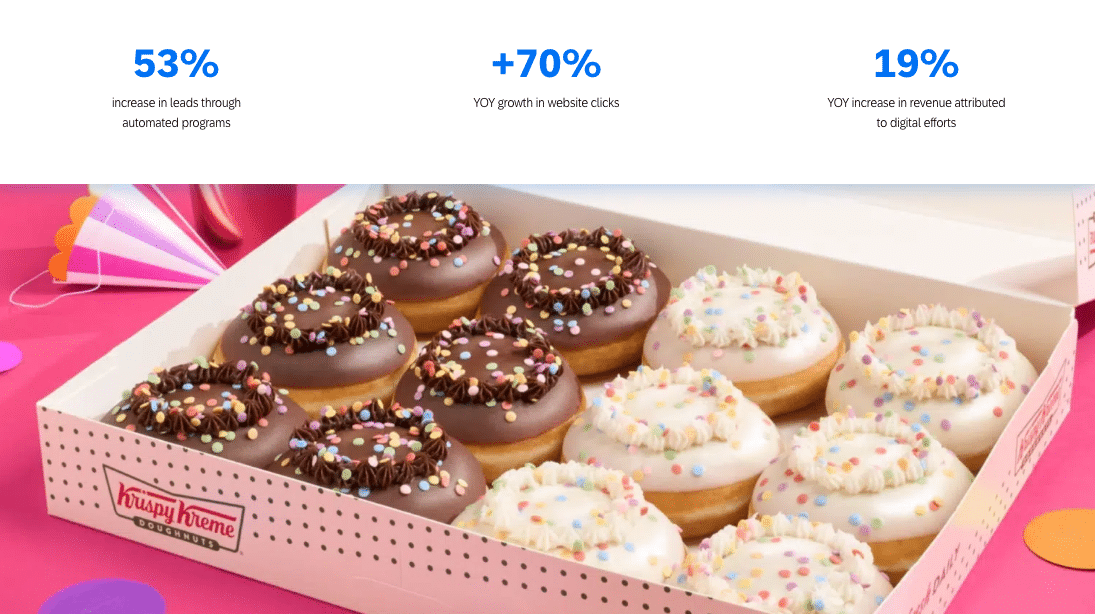
2. Send Emails at each Subscriber’s ‘Personal Peak Time’, Automatically
Timing can be the make or break of email. Sending the right email to the right person is only a portion of the battle, because you also need to reach them in the right moment.
That’s where send-time optimization comes in. By using AI to predict when each customer is most likely to engage with your content, you can automatically deliver emails at their personal peak time. No guesswork, no batch and blast.
SAP Emarsys’ Send Time Optimization (STO) uses AI to analyze each contact’s email behavior (when they typically open and click) then predicts their personal “best time” to receive emails. It seamlessly integrates with campaigns or Automation Center programs, automatically applying optimized send times across individual contacts.
This simple shift can lead to dramatic improvements in open rates.
Example in action: Within six months of implementing AI-powered automation and personalized journeys with Emarsys, PUMA increased its email database by 50%, reached 25% average open rates, and drove a 5× increase in email-attributed revenue.
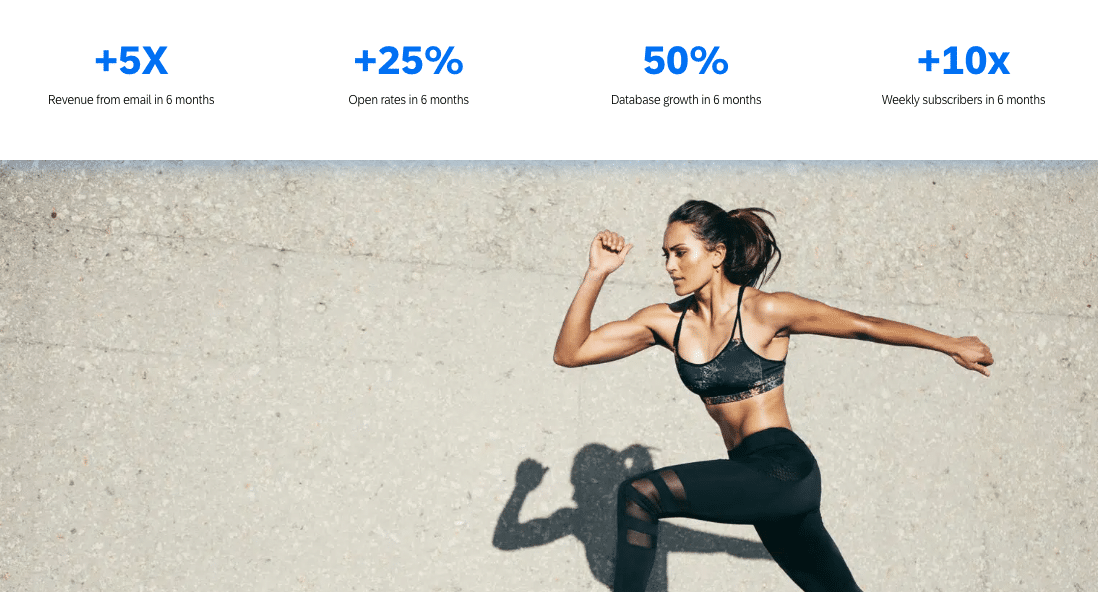
3. Personalize Beyond First Names
Personalization has evolved far beyond “Hi [First Name].” Today, meaningful engagement comes from tailoring content, offers, and timing to the individual, based on what they actually care about.
That means using behavioral data, preferences, and zero-party inputs to shape messages that feel relevant, not robotic. The more aligned your content is with a customer’s real needs and interests, the more likely they are to engage – and convert.
Real-world example: To launch its Ultra Filler+ line, John Frieda used SAP Emarsys to deliver a multi-touch email campaign combining education, product reviews, and survey-driven insights. This personalized approach doubled the click-to-open rate compared to a similar launch and led to 88% of customers purchasing multiple items from the range.
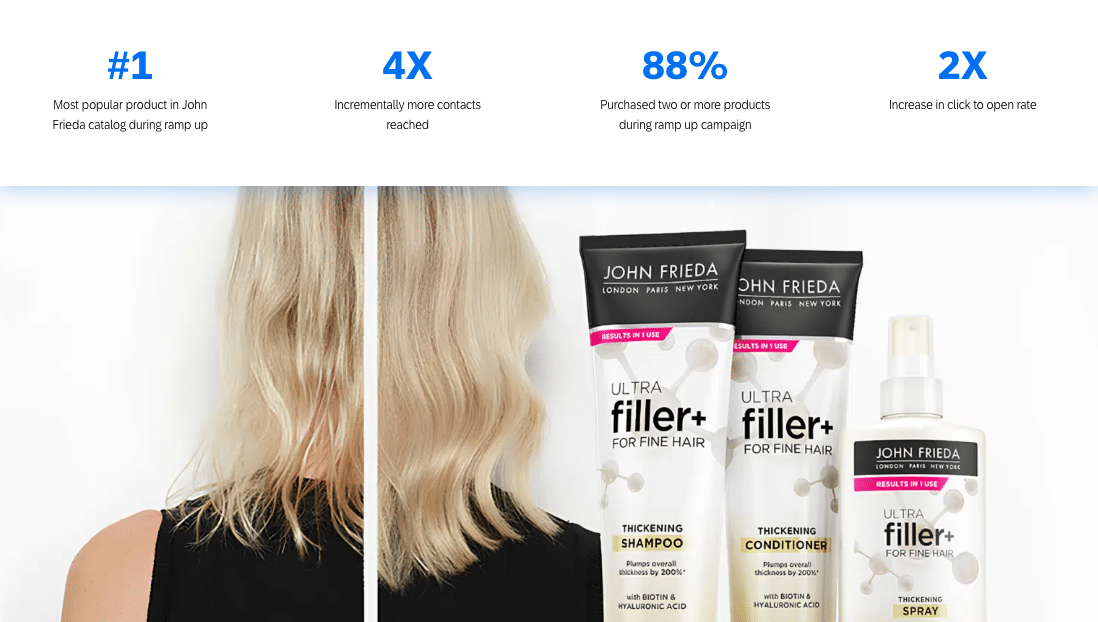
4. Use Automation to Re‑Engage Lapsed Subscribers
Not every customer will stay engaged, but that doesn’t mean they’re gone for good.
Automated re-engagement flows are essential for winning back subscribers who’ve dropped off. Whether it’s a friendly reminder, a tailored offer, or content based on past activity, timely automated emails can reignite interest without demanding manual effort.
The key is recognizing when engagement starts to drop. For example, a subscriber who hasn’t opened recent emails or visited your site in a while. With SAP Emarsys, you can set engagement-based triggers to automatically launch personalized journeys when a contact shows signs of disengagement.
5. Test, Learn, And Adapt With Every Send
Email engagement isn’t a one-and-done strategy. It’s something you refine continuously, and the highest-performing programs treat every campaign as a learning opportunity. With Emarsys, you can test everything from content blocks to automation branches, then break down performance by audience segment, lifecycle stage, or campaign type. The goal? Learn what drives business outcomes, not just opens.
To build a high-impact email testing strategy:
- Test for impact, not just clicks: Track downstream metrics like conversion rate, average order value, or repeat purchase rate, not just who opened or clicked.
- Experiment across segments: A message that works for loyal customers might underperform with new buyers. Use segmentation to test messaging strategies by cohort.
- Compare automation paths: Use A/B testing inside Emarsys automation programs to compare triggered journeys, such as follow-up timing or content types.
- Refine based on behavior: Let results guide your decisions. If testimonial content drives more revenue than discount codes, double down on that insight.
By building experimentation into your daily workflows, you create a smarter, more responsive email program that continually sharpens performance over time.

6. Create Content That Adds Value Beyond Selling
The brands with the highest email engagement aren’t the ones pushing products the hardest. They’re the ones making their customers smarter, more inspired, or more connected to something bigger than a transaction.
When your emails consistently deliver value, subscribers start anticipating them instead of just scrolling past them. The most effective approach is understanding that your expertise extends beyond your product catalog and tapping into what your customers actually care about.
Here’s how this can look in practice:
- Share expertise that positions you as the go-to resource: Send weekly tips, industry insights, or behind-the-scenes content that customers can’t get anywhere else. A kitchen appliance brand might share chef-tested recipes, while a skincare company could offer seasonal routine guides.
- Create exclusive access that makes subscribers feel special: Early product previews, member-only content, or first-look access to sales makes people feel like insiders. The exclusivity itself becomes the value, not just the discount.
- Build community through shared experiences: Highlight customer stories, feature user-generated content, or create challenges that bring your audience together. When customers see themselves reflected in your emails, engagement naturally increases.
- Solve problems before they’re asked: Anticipate common questions or seasonal needs with helpful content. Send care instructions after purchases, holiday gift guides before shopping seasons, or troubleshooting tips for common issues.
Example in action: Hobbii transformed their approach from sending five promotional newsletters per week to focusing on value-driven automation. Their design newsletter delivers 80% patterns and inspiration content with only 20% sales messaging. This shift to educational content, including downloadable patterns, YouTube technique videos, and community showcases, helped them build over 1.1 million customer club members in under 12 months while automation now drives 20% of their total email revenue.
7. Connect Email to the Full Customer Journey
Think about your last great customer experience. It probably wasn’t a single perfect email. It was a series of connected moments: discovering a product on social, getting a helpful follow-up email, receiving a timely reminder, then feeling recognized when you walked into the store.
Most brands optimize email in isolation, measuring opens and clicks without considering the broader journey. But your customers don’t experience your brand in silos. They expect you to remember their app browsing when they’re reading your email, and to acknowledge their store visit in your next message.
This is where email becomes exponentially more powerful. When it’s connected to real-time customer behavior across every touchpoint, from web activity and store visits to loyalty program interactions and support conversations, it stops being a broadcast and becomes a conversation.
The mechanics are simpler than you think:
- Use purchase history to inform email timing: Don’t send a promotion for running shoes the day after someone bought a pair. Instead, follow up with complementary products or care instructions that add value to their recent purchase.
- Let loyalty tier changes trigger personalized campaigns: When customers hit a new status level, acknowledge it immediately with exclusive perks or early access that makes the achievement feel meaningful.
- Connect abandoned browse sessions to relevant product recommendations: If someone spent time looking at winter coats but didn’t buy, your next email should feature similar styles or seasonal outfit ideas, not random bestsellers.
- Make sure your next email builds on social engagement: When someone engages with your Instagram ad for a specific product category, ensure your follow-up email continues that conversation with related content or offers.
The result? Customers who feel understood, campaigns that feel timely, and engagement that compounds across channels. Because when email works as part of the complete customer journey, every interaction becomes more valuable than the sum of its parts.
8. Create Mobile-Friendly, Visually Compelling Content
Mobile is the primary way customers engage with email, especially when it plays a role in a broader omnichannel journey. If your emails are difficult to read or act on in a mobile context, you’re creating friction and likely missing opportunities to convert.
Effective mobile design starts with clarity and focus. Each message should have one clear goal, with a layout that guides the reader naturally. Key content and calls to action should appear early, and visuals should reinforce the message without slowing things down. Responsive templates ensure your emails render cleanly across devices, maintaining consistency and performance.
Do:
- Design around a single message and call to action
- Use purposeful imagery that reinforces product value or credibility
- Build responsive templates and preview across devices to ensure consistency
Don’t:
- Overload the layout with competing content or links
- Push critical information below the fold
- Assume your desktop-first design will perform the same on mobile
When emails are fast, focused, and visually aligned with customer expectations, they perform better and elevate every other channel in your strategy.
